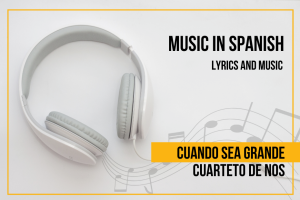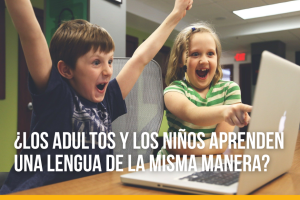By Lucía Rodríguez.
The Spanish language we know today, has gone through a very interesting and long journey; it is the result of thousands of years of language development and cultural influence. It is the most widely spoken Romance language, which include Portuguese, French, Italian, and Romanian basically.
Spanish belongs to the Indo-European family and derives many of its rules of grammar and syntax from Latin, around 75% of Spanish words have Latin roots. Spanish, and its distinct dialects, emerged following years of invasion and settlement of many cultures in the Iberian Peninsula: The Moors from Northern Africa, the Visigoths from Central Europe, and the Christians from the Roman Empire.
Castilian Spanish was originated as a continuation of the spoken Latin (Vulgar Latin) in the northern and central areas of Spain. Then, the northern dialect spread to the south where it absorbed local Romance dialects such as Judaea-Spanish or Ladino and borrowed many words from the Andalusian Arabic.
How Spanish became a language.
The Indo-European languages were first spoken 5,000 years ago in the area surrounding the Black Sea. Because migrations it was spread out across Europe and Asia. Over time, the languages evolved and branched out. Italic branch eventually got to Latin spoken by ancient Romans.
The Iberic Peninsula, currently Spain and Portugal, was invaded by the Roman Empire. The Romans settled on the peninsula in about 200 BC, bringing their spoken language with them, spreading its reach all the way out and influencing the development of the area, both in terms of culture and language. During the Roman Empire, the Latin language was the official language on the peninsula or “Hispania” It mixed with the local languages of the inhabitants, including Celts and Iberians, and began to take on its own form.
The Visigoths, a Germanic group that conquered areas of the peninsula in the 4th century during the demise of the Roman Empire, spoke Latin at this time. This wasn’t the classic Latin that we associate with fine art and religion today. Instead, they spoke a more common, cruder form of Latin, known as Vulgar Latin. This is where historians point the beginnings of the Spanish language as we know it today.
Following the Visigoths, Muslim Moorish conquerors arrived and contributed more than 4,000 Spanish words from Arabic, along with cultural influences such as design, art, and architecture of Spain. Other settlers and languages began to filter into the area, including Arabic due to the Muslim rule of the
peninsula between 711 and 1491.
What started as a local dialect spread in the late 15th century. In 1492, Castilian became the official language of the region, having also developed a writing system.
People started to write down the tales that were previously spread through oral storytelling, further evolving, and refining the language.
How the language reached America?
The colonization of the Americas in the 15th Century started in in 1492, when Italian sailor Christopher Columbus traveled on behalf of Spain to the America four times. He brought the language to many places, including the Bahamian islands, Trinidad, South America, Panama, and the Dominican Republic. “Latin America” refers to countries that were subject to Spanish, French, and Portuguese imperialism and therefore still speak a Latin-based language.
The process of bringing the Spanish language and Spanish traditions, including the catholic religion, into the continent was referred to as Hispanización.
There were many challenges but the biggest was communication. Local languages were starkly different, the Catholic Church stepped in establishing learning institutions to teach Catholicism in Spanish.
The Spaniards occupied the territory for over three centuries and the Spanish language started to spread and expand in the region.
Starting in 1513, Ponce de Leon traveled to North America as a result the first European settlement in the present-day United States was established by Spain in what is now Florida, and Spanish expanded across the United States. All this exploration by the Spanish led to the establishment of several Spanish-speaking colonies along the way.
Spanish was the historical language of many current US states while controlled by the Spanish or Mexican governments. The gradual annexation of southwestern states changed the official language to English, but Spanish is still spoken by large portions of the populations in these areas today.
Language rights are still a complicated issue in the United States and continue to be a subject of debate. Although English is the only official language of the United States, government documents are still provided in Spanish in several states, such as in New Mexico and California.
The Royal Spanish Academy or Real Academia Española was founded in 1713, mainly with the purpose of standardizing the language. It established authoritative criteria for the sanctioning of neologisms and the incorporation of international words. Spanish grammar was formalized during this period.
Spanish continued to evolve after its arrival in the Americas. Native languages spoken by the people who were impacted by visitors and the church, and later, English speakers in modern-day United States, led to variations in spoken Castilian Spanish and dialects emerged. Nowadays, depending on the country, you’ll hear differences in the language.
The Spanish language has a rich and complicated history. It has the of great empires, has been a symbol of cultural identity, and has both been used as a tool of unity and caused considerable divisiveness.
Today Spanish is the second-most widely spoken language in the world (after Mandarin Chinese), with 400 million native speakers, and official status in a staggering 21 countries and is used by people in all corners of the globe to express themselves. Have you thought in learning Spanish? It will be always an excellent choice.


